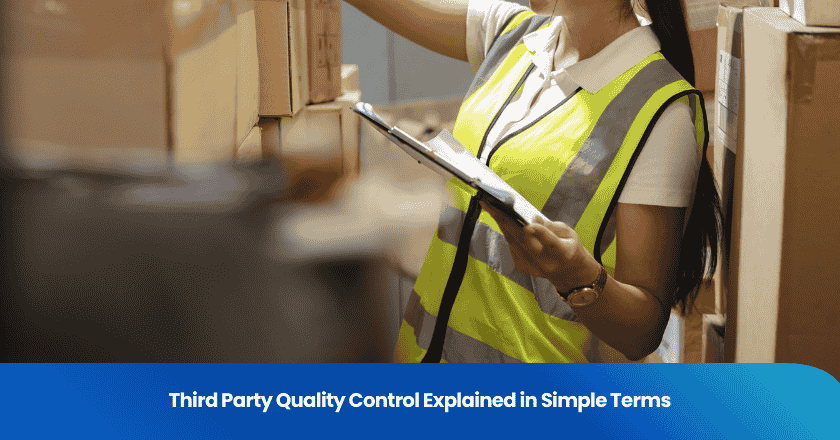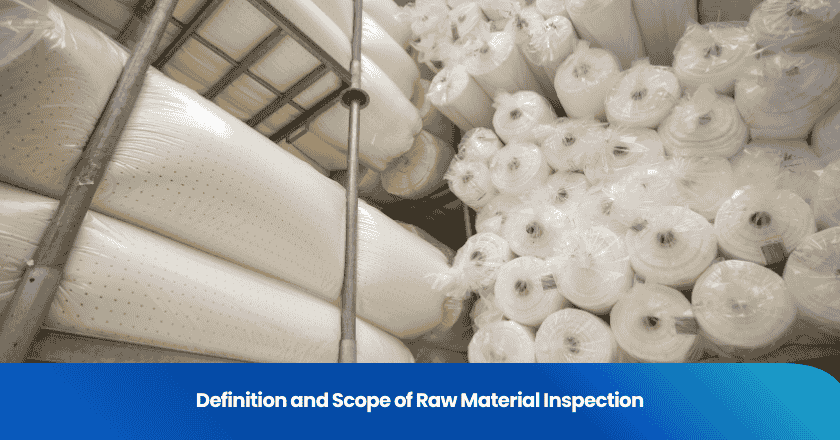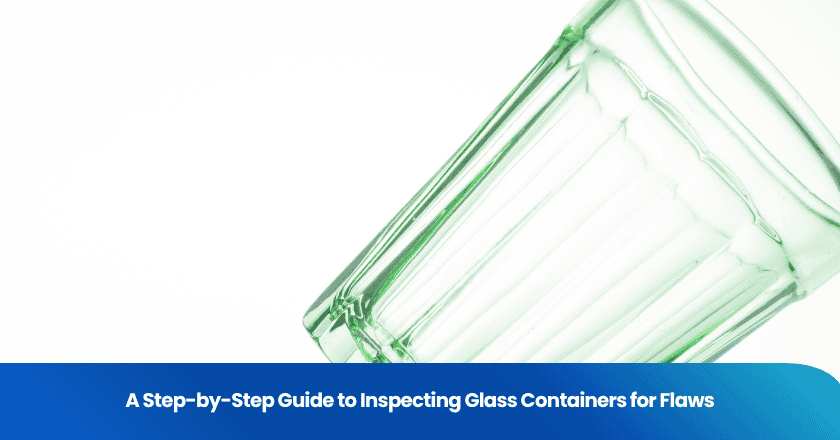
You use third party quality control when you want an independent company to check your products for quality and safety. This process helps you meet international standards and build trust with customers. Over the past decade, global trade and higher demands for quality have made third party quality control much more popular. The market for these services continues to grow as industries focus on stronger compliance and better products.
Why third party quality control?
Objectivity
You want your products to meet high standards, but relying only on your own team for quality inspection can introduce bias. Third-party quality control gives you an independent perspective. When you hire outside inspectors, they have no stake in your business outcomes. Their only job is to check if your products meet the required specifications and safety standards.
Third-party inspectors provide unbiased and transparent reports. They do not face internal pressures or conflicts of interest. You receive honest feedback about your products, which helps you catch issues early and prevent risks before shipment.
Here are some common reasons businesses choose third-party quality control for objectivity:
- Unbiased quality control: Inspectors offer an objective assessment without internal influence.
- Risk prevention through early detection: Inspections at critical stages help you spot problems before they become costly.
- Scalable oversight for global supply chains: Local inspectors give you visibility when sourcing products overseas.
- Compliance confidence: You verify product specs and safety standards before shipping.
- Improved speed-to-market and fewer delays: Early issue resolution keeps your shipments on schedule.
Third-party quality control agencies specialize in compliance verification. Their independent assessments ensure your products meet international standards. This process supports your quality assurance goals and strengthens your reputation for reliable products.
Trust
You build trust with customers and partners when you use third-party quality control. Independent inspection shows that you value transparency and accountability. Stakeholders feel confident knowing that your products have passed unbiased quality inspection.
Collaboration and transparency between vendors and customers foster mutual respect and shared goals. This leads to faster trust-building and stronger assurance.
Certifications from third-party agencies, such as HITRUST, validate your commitment to safety and quality assurance. These certifications reduce risk and increase confidence among everyone involved. The importance of third-party testing becomes clear when you see how it helps you meet industry standards and reassure your customers.
How third-party quality control works
Third-party quality control follows a clear process that helps you ensure your products meet the highest standards. You can break down this process into three main parts: hiring inspectors, performing inspection steps, and reviewing detailed reports. Each stage plays a vital role in delivering unbiased results and building trust in your supply chain.
Hiring inspectors
You start by selecting a third-party quality control agency. This agency provides certified inspectors who specialize in your industry. When you choose an agency, you need to check their qualifications. Look for inspectors who hold relevant accreditations, such as ISO 17020. You also want inspectors with proven competency and a strong track record.
Certified inspectors bring independence and expertise to your quality control testing. They do not have any connection to your company or your suppliers. This separation ensures that every quality inspection remains objective and free from internal influence.
Tip: Always review the agency’s credentials and ask for references before you hire them for third-party quality control.
Inspection steps
Once you hire inspectors, they follow a series of structured steps to carry out third-party testing. These steps cover every stage of production, from the first batch to the final shipment. The process includes several types of inspections, each designed to catch different issues and maintain quality assurance.
| Inspection Type | Description |
|---|---|
| First Article Inspection (FAI) | A quality check on the first batch of products to ensure compliance with design and specifications. |
| Initial Production Check (IPC) | Conducted early in production to verify readiness and quality of the production line. |
| During Production Inspection (DUPRO) | Inspects products during production to ensure quality standards are met. |
| Final Random Inspection (FRI) | A final check after production to evaluate the overall quality of the batch using random sampling. |
| Pre-Shipment Inspection (PSI) | Ensures all items meet quality standards and quantity requirements before shipment. |
| Container Loading Check (CLC) | Verifies that products are loaded correctly and meet shipping standards. |
You benefit from these inspection steps because they help you identify problems early. Inspectors use methods like random sampling, visual checks, and functional tests. They focus on key principles to ensure unbiased evaluation.
By following these steps, third-party quality control agencies deliver reliable and transparent results. You gain confidence that your products meet both your requirements and international standards.
Reports
After completing the inspection, the agency provides you with a detailed report. This report is a key part of third-party quality control. It summarizes the findings, highlights any defects, and gives you a clear picture of your product’s quality. The report typically includes:
| Evidence Type | Description |
|---|---|
| Third-party Providers | Information on the extent of usage and characteristics of third-party providers used by the firm. |
| Engagement Types | Details on the types of engagements performed and the companies involved, including size and complexity. |
| Monitoring Activities | Observations from monitoring activities regarding the design and use of services. |
| Quality of Services | Information on the experience and reliability of services performed and the competence of individuals involved. |
You also receive monthly summaries and defect findings if you use ongoing third-party testing. These reports help you compare your quality control testing results to your targets. They also support your business decisions in several ways:
| Evidence Type | Description |
|---|---|
| Compliance | Ensures adherence to international standards, critical for market entry and operational success. |
| Trust Building | Fosters trust between buyers and sellers through impartial evaluations. |
| Risk Management | Enhances risk management by identifying potential issues early in the supply chain. |
- Third-party quality control reports give you objective evaluations of product quality.
- They help you reduce uncertainty and improve business relationships.
- Clear reports support your quality assurance strategy and help you avoid costly mistakes.
You can see the importance of third-party testing in every step of this process. The role of third-party testing is to provide you with accurate, unbiased information so you can make informed decisions and deliver better products to your customers. Quality inspection and quality control testing are essential tools for building trust and ensuring long-term success.
Who does third-party quality control?
Third-party inspectors
You rely on third-party inspectors to carry out unbiased evaluations of your products and processes. These professionals work for independent agencies that specialize in quality assurance across many industries. You see them in manufacturing, food safety, construction, and more. Their main job is to make sure your products meet all required standards and regulations.
Third-party inspectors perform a wide range of tasks. You can review their main roles and responsibilities in the table below:
| Role/Responsibility | Description |
|---|---|
| Conduct inspections | Inspect products and processes to verify compliance with specifications. |
| Compliance assurance | Ensure adherence to industry standards and regulations. |
| Documentation | Maintain accurate records and reports for regulatory purposes. |
| Collaboration | Work with engineering teams to resolve non-conformance issues. |
| Quality verification | Oversee quality verification throughout production. |
| Training | Teach junior inspectors best practices and inspection techniques. |
You benefit from their expertise in identifying risks and reporting non-conformances. Inspectors also review documentation, oversee installations, and raise issues when they find problems. You gain confidence in your supply chain when you use third-party quality control agencies.
You should select inspectors who demonstrate strong attention to detail and a commitment to impartiality. Their independence ensures that your quality assurance process remains objective.
Qualifications
You need to check the qualifications of third-party inspectors before you hire them. Qualified inspectors hold certifications that prove their expertise in quality assurance and compliance. These certifications cover a wide range of standards, including product safety, environmental management, and food safety.
Here are some of the most common certifications you should look for:
| Certification | Description |
|---|---|
| ISO 9001 | Quality management systems |
| ISO 14001 | Environmental management systems |
| ISO 45001 | Occupational health and safety management systems |
| ISO/IEC 27001 | Information security management systems |
| ISO 22000 | Food safety management systems |
| HACCP | Hazard analysis and critical control points |
| GMP/GMP+ | Good manufacturing practices |
| FDA/USFDA | Food and Drug Administration compliance |
| BRCGS | Global standard for food safety |
| SA 8000 | Social accountability standard |
| C-TPAT | Customs-Trade Partnership Against Terrorism |
| WRAP | Worldwide Responsible Accredited Production |
You should also consider factors such as risk management principles, supplier controls, and collaborative processes when selecting a provider. Agencies help you define compliance requirements, develop management plans, and conduct audits to ensure your products meet international standards.
You improve your quality assurance results when you choose inspectors with the right qualifications and experience. Their certifications and skills help you maintain compliance and deliver safe, reliable products.
Benefits of third party quality control
Unbiased results
You gain unbiased results when you use third-party quality control. Independent inspectors provide objective evaluations that reveal actual risks in your products and processes. You avoid conflicts of interest because these inspectors have no stake in your business outcomes. Their assessments help you comply with regulations and improve operational performance.
- Objective evaluations identify real risks.
- Compliance with regulations becomes easier.
- Effective solutions improve customer satisfaction and financial results.
Unbiased results from third-party quality control allow you to make informed decisions and address issues before they affect your customers.
Better quality
You improve product quality by implementing third-party quality control testing. Inspectors follow strict standards and use proven methods during quality inspection. Their expertise ensures your products meet specifications for potency, purity, and safety. You also benefit from early detection of potential hazards, which protects your reputation and reduces costly recalls.
You see long-term benefits such as enhanced supply chain transparency and better risk management. Third-party quality control supports your business growth by promoting collaboration and optimization.
Customer confidence
You build customer confidence when you use third-party quality control. Recent surveys show that third-party testing eliminates bias and increases transparency in your supply chain. Consumers feel reassured knowing your products have passed independent evaluations for safety and quality. Industry professionals and end-users trust results from neutral and accredited laboratories.
The benefits of third-party quality control testing extend beyond your business. You create peace of mind for your customers and strengthen your position in the market.
Third-party testing examples
You see third-party quality control in action across many industries. These examples show how independent inspections help you maintain high standards and protect your reputation.
Manufacturing
In manufacturing, third-party quality control plays a vital role in identifying defects early and ensuring product safety. Independent inspectors check supplier methods and materials, which helps you avoid costly rework and recalls. You benefit from objective assessments that keep your supply chain strong.
You can also use advanced technology, such as artificial intelligence, to detect defects in real time and improve your quality control process.
Third-party quality control in manufacturing focuses on early problem identification, which reduces risks and improves product quality.
FAQ
What is the main purpose of third-party quality control?
You use third-party quality control to ensure your products meet industry standards. Independent inspectors help you identify issues early. This process builds trust with your customers and supports your business reputation.
How do you choose a reliable third-party inspection agency?
You should check the agency’s certifications and inspector qualifications. Review their experience in your industry. Ask for references and sample reports. Reliable agencies provide clear communication and transparent processes.
When should you schedule third-party inspections?
You can schedule inspections at different stages, such as before production, during production, or before shipment. Early inspections help you catch problems quickly. Final inspections confirm product quality before delivery.
How does third-party quality control support risk mitigation?
You gain risk mitigation by using independent inspections. Inspectors identify potential problems before products reach customers. This process helps you avoid costly recalls and protects your business from compliance issues.
Grow your business with TradeAider Service
Click the button below to directly enter the TradeAider Service System. The simple steps from booking and payment to receiving reports are easy to operate.



